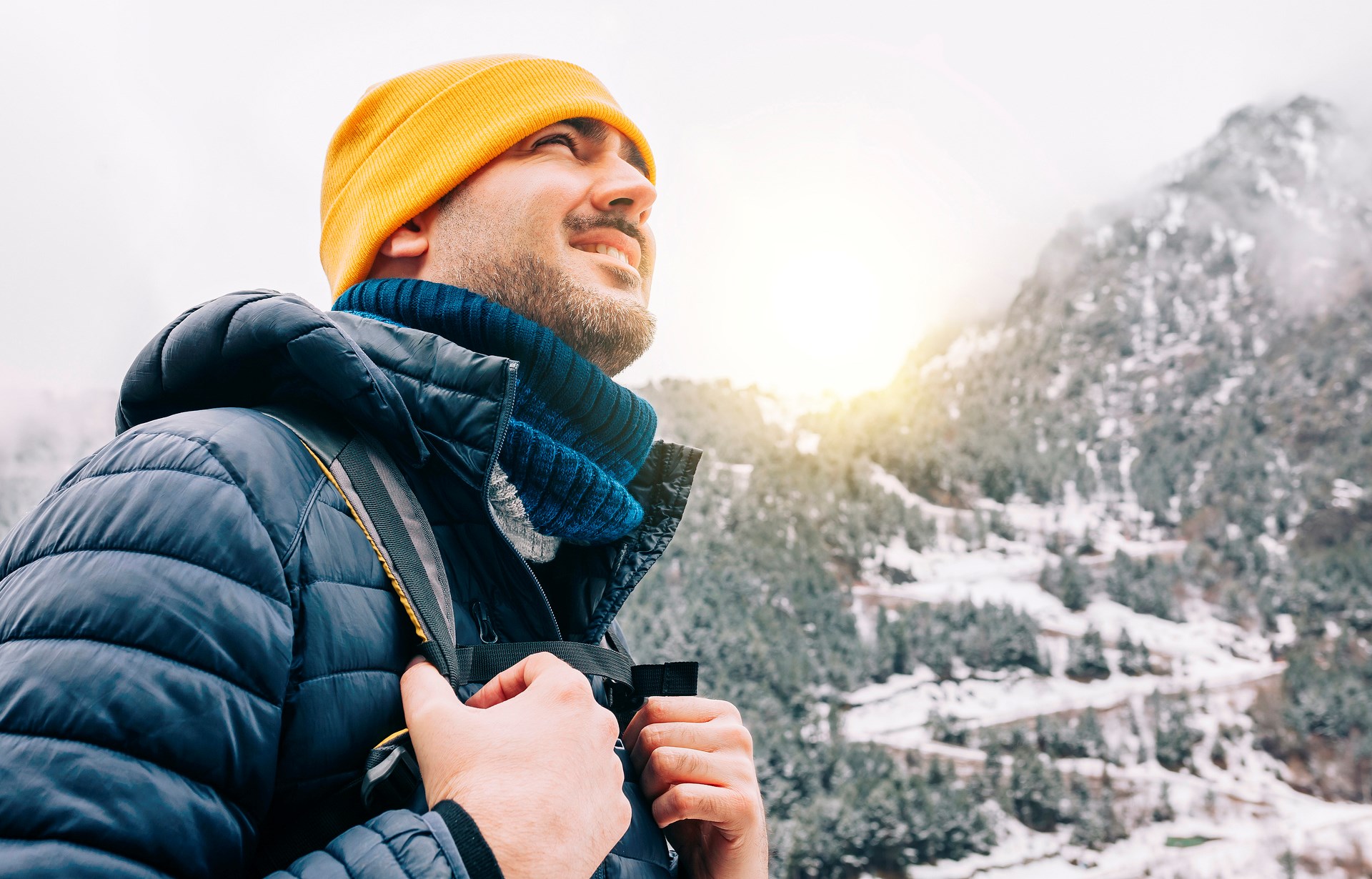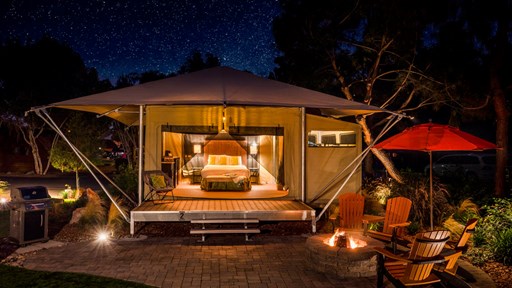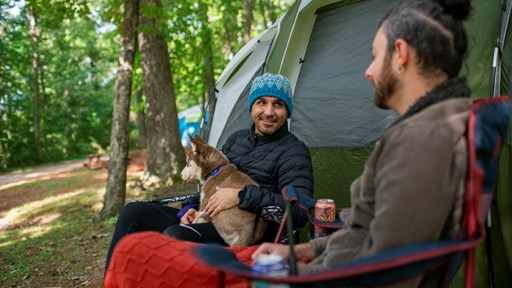When spending time outdoors during cold weather, layering is the best way to stay warm and cozy. Whether you are planning a winter camping trip or spending the day skiing or sledding, keeping warm will make the experience much more enjoyable. Get the most out of the winter season by learning to layer your clothes for the highest level of comfort.
Why You Need to Layer for the Cold
When going outside in the winter, you may be tempted to throw on a heavy coat and call it good, but layering will improve your outdoor experience. Layering keeps you dry, which prevents hypothermia and discomfort. It also stops the wind, making you feel warmer. When you wear layers, you can prepare for unpredictable weather. As the temperature drops, add more layers. When temperatures rise, remove layers.
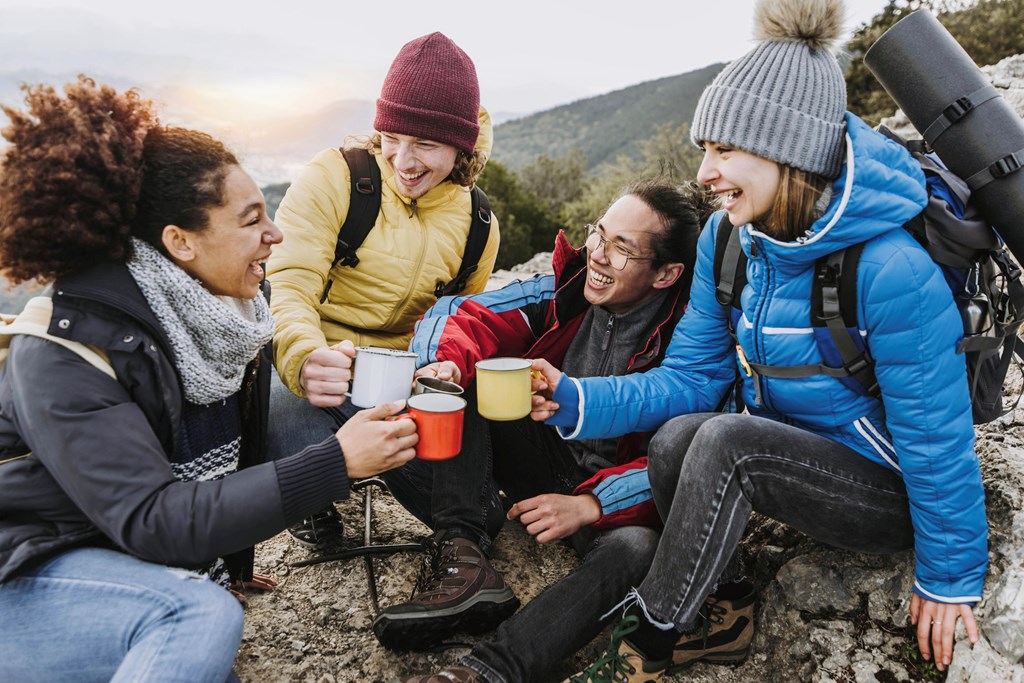
Best Way to Layer for Cold Weather
In cold weather, each layer of clothing serves a function. You should wear three layers:
- Base layer: The base layer keeps you dry.
- Mid layer: The mid layer keeps you warm.
- Outer layer: The outer layer shields you from rain or snow.
When choosing winter layers, ensure they are snug but still able to allow air circulation. As you go about your day, you can add and remove layers as you get warm or cold.
Moisture-Wicking Base Layer
The base layer wicks away sweat to keep your skin dry and prevent chills. When choosing a base layer, you have several fabric options, including:
- Polyester
- Nylon
- Silk
- Merino wool
Each material has slight differences, but you can generally choose based on what is already in your closet or your preference. When shopping or browsing your wardrobe, look for moisture-wicking shirts. Even summer shirts can act as a good base layer. Also, choose moisture-wicking materials for boxers, briefs and bras. Avoid cotton materials in winter as they absorb water and stay wet.
Insulating Mid Layer
Your mid layer is your warm layer of clothing and serves to keep in body heat. In this category, you have many options. In general, try to stick to thick materials. Polyester fleece is warm yet breathable, and it preserves heat even when damp. Different thicknesses of fleece can offer varying levels of warmth.
Down-insulated jackets work well for keeping in heat and have the added benefit of blocking some water and wind. They are not as warm when damp, but they are highly compressible. You can find synthetic-insulated jackets that do not compress as small as down, but they stay warmer when wet. Like down jackets, they have added water and wind resistance.
Protective Outer Layers
Your outer layers are usually water resistant and can keep wind, rain and snow away. When choosing a coat, ensure it can fit over your other layers without being too tight. In terms of materials, you have several options:
- Waterproof breathable: These options are the most expensive, but they are the best at keeping you dry. They are often quite durable, too, making them a worthwhile investment.
- Water-resistant breathable: These shells are most likely made out of nylon or polyester. They keep you dry in drizzly, windy weather or during high-intensity activity.
- Soft shells: These coats work better for intense activity. They are more breathable, and many combine the insulating and shielding layers.
- Waterproof nonbreathable: On rainy days with light activity, this outer layer makes a great choice. It is typically made of coated nylon.
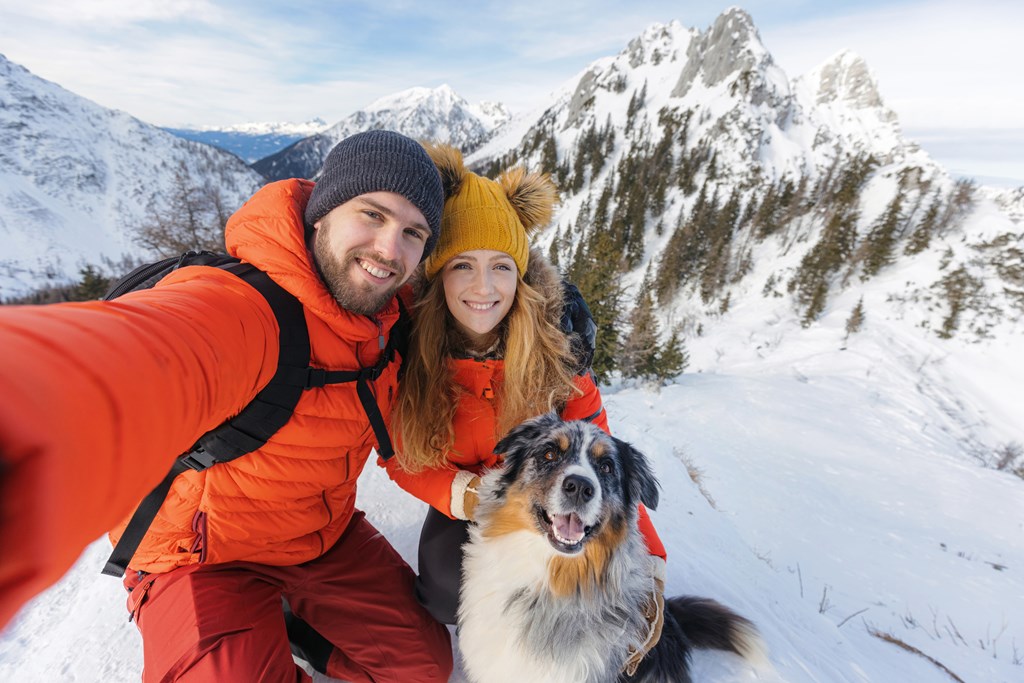
How to Keep Different Body Parts Warm
Layering keeps your core areas warm when going out in the cold. You should also think about your head, hands, feet and legs when choosing warm clothing. Here are a few tips for each body part:
- Head: Hats or balaclavas (ski masks) can keep your ears and face warm. Even if you have a hood, adding these layers can protect against wind, snow or rain gusts.
- Hands: Keep your hands warm with insulated gloves or mittens. Mittens will provide the most warmth. Gloves work better for activities where you need to be able to move your fingers.
- Legs: Protect your legs from the cold by choosing layers like flannel-lined jeans. Insulated overalls work well when you need to keep out water, like when trekking through the snow.
- Feet: On your feet, wear boots and thick wool socks. You can even layer several socks for frigid temperatures — just make sure you have a pair of boots that fit the extra bulk.
Layering in Different Weather
Proper layering for cold weather can change based on the temperature. The method you use to layer clothes for winter is different than dressing for a chilly fall or drizzly spring. When layering, think about the weather outside. Cold, windy winter weather may mean choosing a thicker insulating layer to stay warm. In rainy and cool weather, prioritize clothing that keeps you dry. Keep your layers thinner to prevent sweating, which can cool you down just as quickly as the rain.
You can even layer in hot weather, though you will likely have fewer layers. You might wear a moisture-wicking shirt and a windbreaker for breezier days. Whatever the weather, dress for about 10 degrees cooler, as you can remove layers if you get too warm.
Considering Your Activities When Planning Clothing
While the weather impacts your wardrobe, your activities can also influence what you wear. Even in the same temperature, you will wear different clothing for sitting around than hiking or other activities. If you plan to exert yourself, you may opt for clothing that is not as warm. For days with less activity, wear more layers to stay cozy in the cold.
During your cold weather activities, pay attention to how you feel. Shed layers as soon as you get warm to prevent sweat, which could leave you feeling cooler later. When you stop moving or feel cold again, put layers back on to preserve warmth.
Book Your Cold-Weather Camping Trip
Camping is an excellent cold-weather activity, allowing you to experience the great outdoors cloaked in gorgeous fall colors or covered in snow. Cold-weather camping also enables you to avoid the summer crowds for a peaceful getaway.
Now that you know how to pack for cold weather, keep the vacation planning going by reserving a campsite. Kampgrounds of America has many campground locations open year-round, so you have plenty of options to find your next cold-weather destination.
About the Author: Kampgrounds of America
Kampgrounds of America is the largest system of open-to-the-public campgrounds in the world, with over 500 locations across the United States and Canada. Founded in Billings, MT in 1962, KOA’s family of campground brands – KOA Journey, KOA Holiday and KOA Resort – today serve more than a million camping families each year. KOA is dedicated to “connecting people to the outdoors and each other” by providing people with a variety of camping experiences and the information they need to make the most of their camping trip. Read more of their camping and travel resources by visiting KOA.com/blog.



















